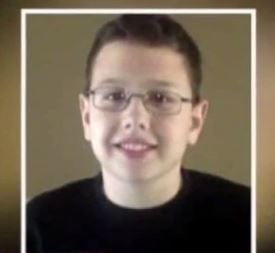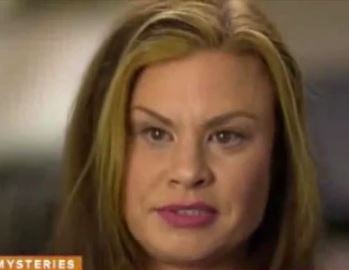Mother's helps cure son's misdiagnosed illness through internet research
Bobby Leithauser had been suffering from a mystery condition for four years

Your support helps us to tell the story
From reproductive rights to climate change to Big Tech, The Independent is on the ground when the story is developing. Whether it's investigating the financials of Elon Musk's pro-Trump PAC or producing our latest documentary, 'The A Word', which shines a light on the American women fighting for reproductive rights, we know how important it is to parse out the facts from the messaging.
At such a critical moment in US history, we need reporters on the ground. Your donation allows us to keep sending journalists to speak to both sides of the story.
The Independent is trusted by Americans across the entire political spectrum. And unlike many other quality news outlets, we choose not to lock Americans out of our reporting and analysis with paywalls. We believe quality journalism should be available to everyone, paid for by those who can afford it.
Your support makes all the difference.A 13-year-old boy in Florida who had been suffering from severe stomach pains since the age of nine is now on the road to recovery after his mother successfully determined the cause of the illness after years of misdiagnosis by doctors.
According to the Today show, Bobby Leithauser, from Marco Island, Florida, was originally diagnosed with dysautonomia, a malfunction in the automatic nervous system, and Ehlers-Danlos Syndrome, a tissue disorder.
However, as far as Keri Leithauser was concerned, the diagnosis did not seem to account for all of the issues that her son was suffering, including stomach afflictions, loss of vision and agonising neck pain.
She began doggedly researching the symptoms online and eventually came across the work of Dr. Harold Rekate, a neurosurgeon at the Cohen Children’s Medical Center in New York.
He soon discovered that Bobby had a Chiari malformation, a rare but treatable condition that affects the cerebellum, the part of the brain responsible for motor control, by pushing the spine up into the brain.

Dr. Rekate operated on Bobby last October performing a surgery that he had invented.
Bobby now seems to be almost completely cured and said that he “couldn’t believe” his unbearable pain was gone after so many years of suffering.
The teenager’s health problems initially appeared when he just was nine years old as he began experiencing intense stomach pains. This prompted his parents to start limiting his food to the point that he was exclusively consuming blueberries and chicken but still his ailments continued.
Soon came headaches, tremors and an inability to control his body temperature or regulate his blood pressure.
“It was a really horrendous pain and I couldn’t hold my head up for more than 10 minutes at a time,” Bobby told the programme.
As her son’s condition rapidly worsened, even after he was put on treatment for dysnautonomia and Ehlers-Danlos Syndrome, Mrs. Leithauser began conducting research of her own:
She said: “The whole time we were looking at stomach pain, never imagining that the problem could be in another part of his body, like the brain.”
Eventually her research took her to Dr. Rekate who diagnosed Booby immediately after seeing scans of his skull and spine, which indicated that they were not held together properly because the ligaments were too loose.
“I knew that he could be helped by surgery,’ Dr. Rekate said. “I knew that the chronic pain that he was in, that the inability to exercise could be helped, that we could change his life.”
Bobby is now able to walk again and his chronic pain and headaches, as expected, have disappeared. What has been more surprising is that the issues associated with his automatic nervous system suddenly started to improve.
His father, Tom said: “To me, it’s a miracle. It really is a miracle.”
Chiari malformations are caused by structural problems in the brain and spinal cord. Symptoms include dizziness, muscle weakness, numbness, vision problems, headaches and problems with balance and coordination.
It was previously believed that they affect one in every 1,000 births but recent research indicates that they appear to be more common. Babies born with Chiari malformation don’t develop syndromes until adolescence or adulthood if they develop them at all.
Join our commenting forum
Join thought-provoking conversations, follow other Independent readers and see their replies
Comments